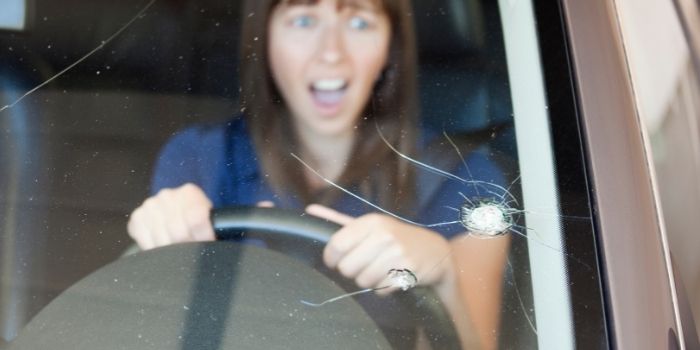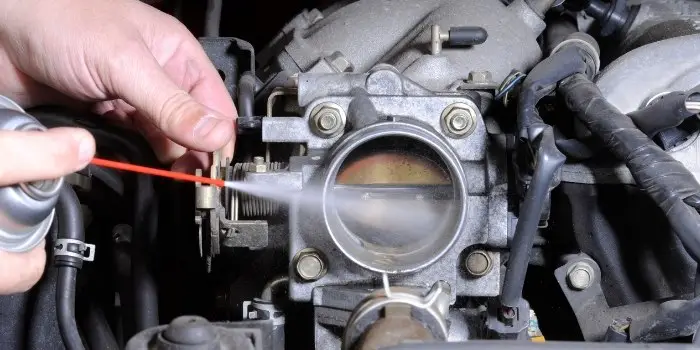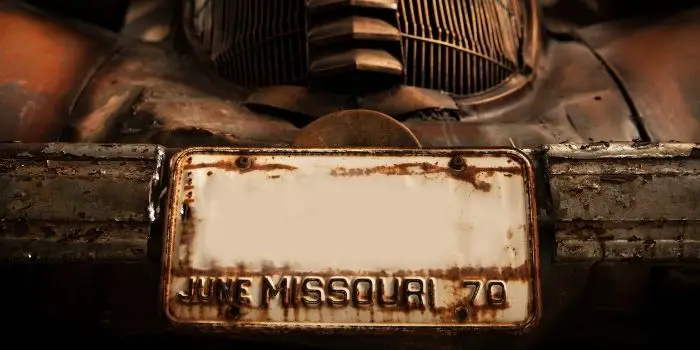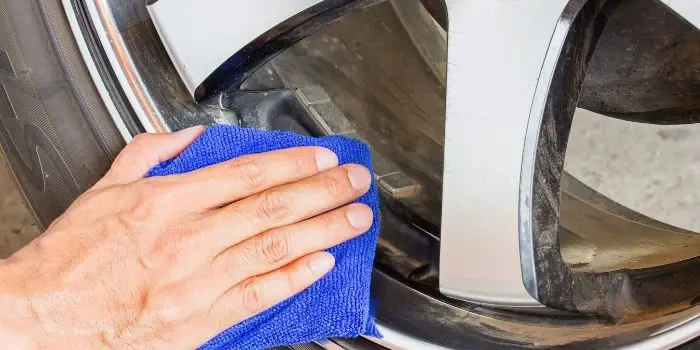Chips and cracks expand over time, whether triggered by a stone flying up from the road or another incident.
The terrible truth settles is, you’ll need to repair the windshield.
It may cost you time going to the service center, money, not being able to drive your car for a few days, and worst of all, facing increased insurance costs.
However, this does not have to be the case. A broken windshield can occur at any time, but mending it yourself is simpler than you think.
And in this post, you’ll discover step by step how to repair your windshield and get your car back on the road:

Table of Contents
How to DIY Repair a Windshield Crack?
Fillers and replacements are the two forms of windshield crack repairs.
Their names should be dead clues as to what they’re meant to remedy, but let’s get into it:
Filler: Fillers are transparent glues or resins used to fill small fractures, divots, and cracks.
However, they are not meant to fill major fractures or holes. And most of these may be completed at home.
Replacement: When a fracture or hole in your windshield is too large to be mended with fillers, you must replace it.
These are usually rather huge, spanning the whole width of the windshield, and must be handled by professionals.
Tools You’ll Need to Fix Your Windshield…
a) Windshield repair kits – These are all-in-one options and often include a suction device, applicator, resin, and clearcoat or sealer to get rid of air from the gap.
This is the absolute bare minimum for a repair.
b) Resins – You can select either a low or high resin’s viscosity.
What you pick will be determined by the degree of damage to your windshield, the environment in which you live, and the tint of your windshield.
A longer crack will necessitate a higher, while a little damage will merely necessitate a lower resin’s viscosity.
c) UV curing lamps – They are utilized to dry up the chemicals and glue used in the repair.
This is often exclusively used by professionals in garages, although it might be useful in a home garage.
d) Pre-treatment chemicals – They remove water and get the damage ready for the resins, allowing them to cling to the surface more effectively.
Steps for fixing windshield cracks
Once you are ready with all the tools and accessories for repairing, here are the easy steps you will need to follow…
Step 1: Park your automobile somewhere out of the light and heat so that any resins or liquids you put on the surface don’t dry too quickly.
Step 2: Clean the damaged area by scraping it with a razor blade to remove loose particles like glass and debris.
If required, use the blade’s corner to dig out harder-to-reach parts. Repeat this process until the area is free of debris and undesirable loose bits.
Step 3: Suction cups and amounts should be included in your windshield repair kit.
Place the mount directly above the point of impact. Check that the suction cups are securely attached to the glass.
Step 4: Insert your resin tool. This is usually a white tube that is put immediately over the affected region.
The rubber region surrounding the tube’s border should completely wrap the damaged area.
Step 5: Pour in the resin and add six drops or whatever the label recommends for the magnitude of the damage you’re repairing.
Step 6: Immediately after dropping the resin, squeeze the resin plunger down to compress the resin into the whole afflicted region.
Step 7: When you’re happy with the results, remove all of the tools and apply a few drops of resins on the damaged spot before you put the plastic strip which you get with the repair kit.
Then get that to dry for up to ten minutes under UV curing lights or in the sun.
Step 8: Remove the strip and use the razor blade to get rid of excess resin.
So, to there you have it, we hope you can now fix your windshield with ease or let the professionals handle it based on the amount of damage.
What Can Crack or Chip your Windshield?
A variety of commonplace things and environmental particles might cause your windshield to break.
Here are some of the most common ones:
Pebble/stone/rock
The most prevalent assaults on your windshield are pebbles, stones, and rocks.
They are regularly scooped up by tires and fired from the backseats of automobiles towards your windshield.
They frequently generate tiny chips and cracks, and when they are big and fast enough, they can penetrate all three layers.
Insects
Yes, those flying, leaping, and multi-legged monsters may cause damage to your windshield if struck hard enough.
Birds
Low-flying or oblivious birds might collide with your windshield, crack and shatter the whole thing.
Nuts & Bolts
Nuts, bolts, washers, screws, and nails are some of the most typical items to fracture your car’s glass.
They can easily leave the vehicles and get dumped on road to act as a windshield blaster for random automobiles.
Trash/Garbage
Humans are slackers. We often take the easy way out, even when it comes to disposing of our car’s waste and remaining road work material.
Some people regard a window as a trash chute.
Stuff is thrown away, becoming litter on the road and perhaps becoming the reason for other’s car’s windshield damage.
Types of Chips and Cracks on the Windshield
You might be shocked to find that there are much more varieties of cracks than you think.
So, let’s go over them one by one:
1- Cracks:
Cracks may be classified into three types. Here’s how they’re broken out.
- Stress cracks – These fractures are typically formed not as a result of something hitting the windshield on that specific day, but as a result of repetitive hits and the glass eventually collapsing.
- Edge – As the name indicates, these fractures begin at the windshield’s outside borders and expand into the center.
- Floater cracks – They occur a few distances away from the glass’s edge and can be exacerbated by excessive cold and heat.
2- Chips:
They form when debris strikes the windshield, creating a tiny depression in the glass.
Your windshield may survive many chips or “pits,” but you should fix them as soon as possible so that they don’t grow into cracks.
3- Bullseye:
They are generally in the shape of the eyes of the bull and designed like a crater with concentric rings emerging from a central depression.
4- Stars:
When a chip has small fractures radiating out in a star pattern, this is referred to as a star crack.
When star fractures appear, they are among the simplest chips to repair using glass filler.
5- Combination:
These cracks are, as the name implies, a mash-up of the aforementioned cracks, and chips.
They frequently arise after several strikes and can compromise the quality of the glass to the extent that you need to replace it.
Lastly, there are the large cracks that are the most important ones. They cover the entire windshield and must be replaced right away.

Based in Orem (Utah) John Paterson graduated from Utah Valley University and has begun writing in 2009. He has a large wealth of experience in writing articles related to cars, automotive repair, wheels, cleaning/maintenance, and much more. He has also written instructional articles in a similar niche for a few online publications as well. Currently, he works as a mechanic in his personal garage shop where he loves serving his countrymen from his heart.




